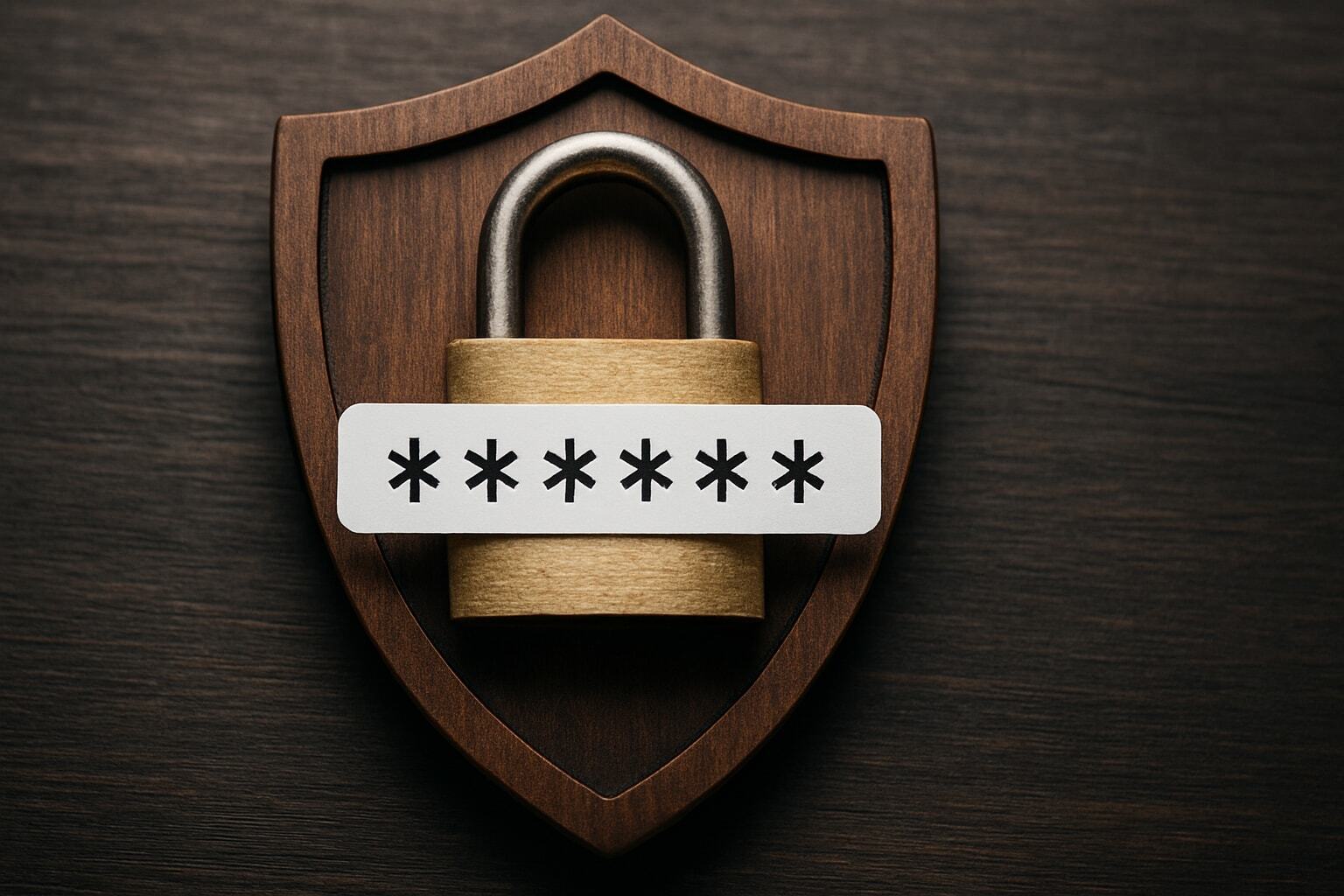Protecting Your Passwords: The Essential Guide for 2025
Imagine waking up to discover your bank account empty or your private emails exposed, all because your password was too easy to guess. In today's digital world, protecting your passwords is not just a technical task, but a critical defense against ever-evolving cyber threats.
As we head into 2025, hackers are becoming more sophisticated, and your personal data is constantly at risk. This guide will give you practical steps for protecting your passwords, so you can safeguard your digital life with confidence.
You will learn about the latest security risks, proven best practices, advanced tools, and what to expect in the future. Take control now and stay one step ahead.
Understanding Today’s Password Threat Landscape
The digital landscape is shifting rapidly, making protecting your passwords more vital than ever. Cybercriminals are adapting, using smarter tactics and targeting both individuals and organizations. To stay secure, it is essential to understand the evolving risks and the realities of today’s password threats. For a deeper dive into current digital security risks and practical approaches, explore Digital security trends and realities.
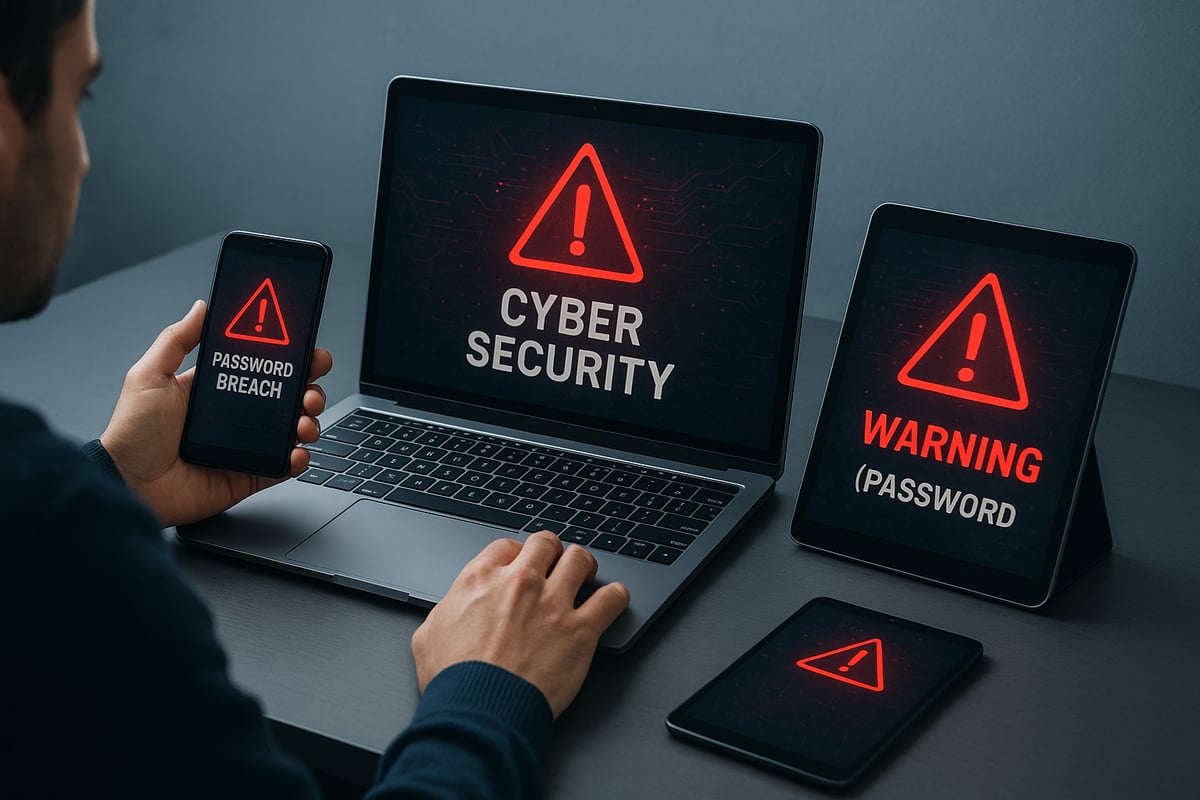
The Evolution of Cyber Threats
Cyber threats have grown more sophisticated in recent years. Attackers now employ advanced phishing techniques and social engineering to trick users into revealing sensitive data. Automated credential stuffing and brute-force attacks are on the rise, making protecting your passwords a constant challenge.
In 2023, credential breaches increased by 20%, according to the Verizon DBIR. AI-powered hacking tools can now bypass basic security measures, learning from failed attempts and targeting users with alarming precision. This relentless evolution means everyone must adapt their security habits.
Common Password Vulnerabilities
Weak or reused passwords remain the most common entry points for attackers. Many people still use simple combinations or share passwords between multiple accounts, which significantly lowers defenses. Protecting your passwords means avoiding these pitfalls.
Passwords exposed in data breaches often end up for sale on the dark web. Over 80% of hacking-related breaches in recent years involved weak or stolen passwords, as reported by the Verizon DBIR. Risks also arise from password sharing and storing credentials in unsecured documents or browsers.
High-Profile Breaches and Lessons Learned
Major organizations, from LinkedIn to Marriott, have suffered high-profile breaches due to inadequate password management. These incidents highlight the devastating financial and reputational damage that can result. Individuals are not immune—personal accounts are frequent targets.
The key lesson is that protecting your passwords requires using unique, complex combinations for each account. Multi-factor authentication adds a crucial extra layer. Ignoring these best practices can lead to the same mistakes seen in headline-making breaches.
The Cost of Poor Password Hygiene
Neglecting password security can have serious financial and personal consequences. Businesses face average breach costs of $4.45 million per incident, according to IBM. For individuals, compromised accounts can lead to identity theft, loss of access, and long-term stress.
Protecting your passwords is not just about avoiding inconvenience. It is about safeguarding your finances, reputation, and peace of mind. The fallout from a breach can last months or even years, affecting credit, trust, and future opportunities.
Why 2025 Is Different: New Challenges
The password threat landscape in 2025 brings new complexities. The explosion of connected devices, known as the Internet of Things, means there are more entry points for attackers. Regulatory updates like GDPR and CCPA require stricter compliance, making protecting your passwords a legal as well as a practical necessity.
Our growing reliance on digital identities for daily life raises the stakes. Passwords now protect everything from banking and healthcare to smart homes. Staying ahead of these challenges demands constant vigilance and a willingness to adapt security strategies.
Building Strong Passwords: Best Practices for 2025
A strong password is your first line of defense in protecting your passwords and, by extension, your digital identity. In 2025, cyber threats are only getting smarter, so building robust passwords is more important than ever. Let us break down the essentials for creating and managing secure passwords in the modern age.
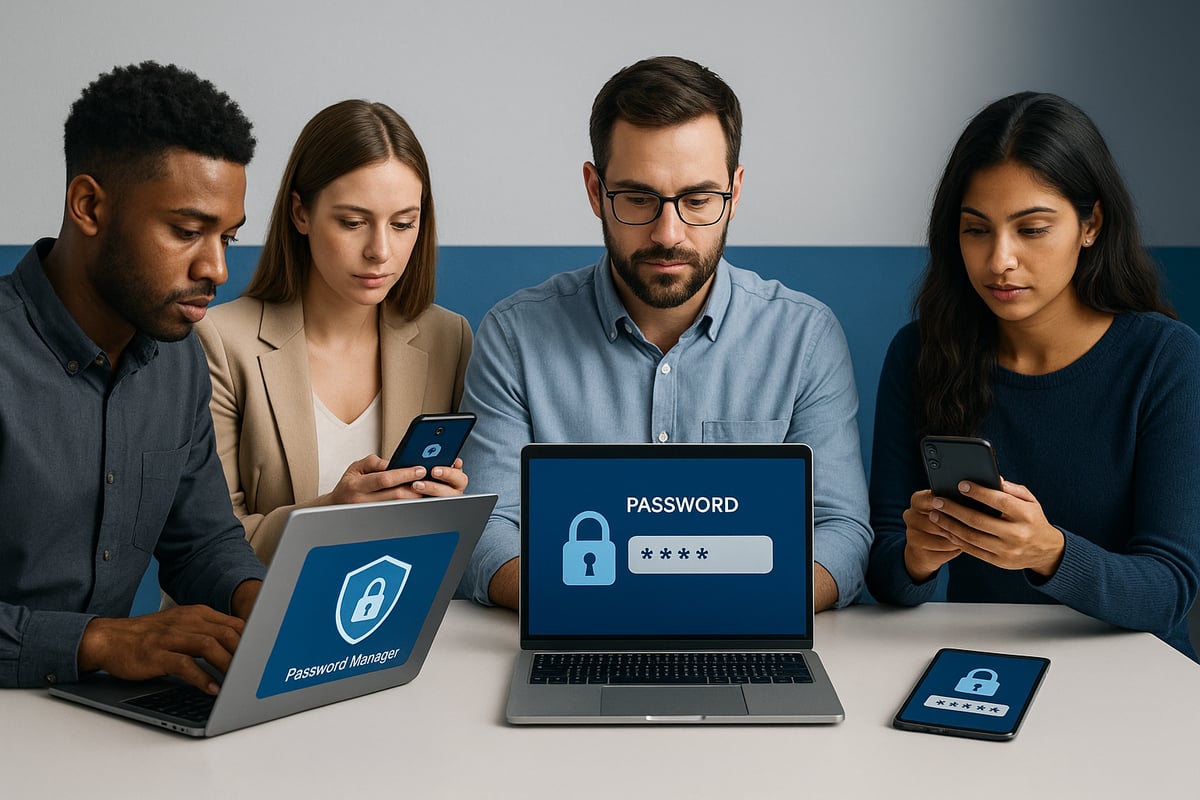
Characteristics of Secure Passwords
When it comes to protecting your passwords, the foundation is a strong password. In 2025, experts recommend a minimum of 16 characters, mixing uppercase, lowercase, numbers, and special symbols. Passphrases—combinations of unrelated words—are now favored over traditional single-word passwords.
For example, compare these:
|
Password Type |
Example |
Security Level |
|---|---|---|
|
Weak Password |
123456 |
Low |
|
Complex Password |
Tr33sG!veOxyg3n!2025 |
High |
Using a passphrase such as Coffee!Rainbow$Giraffe2025 is both memorable and secure. For the latest trends and statistics, see Password security statistics 2025.
Avoiding Common Mistakes
Many breaches occur because users overlook basic security measures. Avoid using personal information like birthdays or pet names. Steer clear of dictionary words and predictable patterns, such as "Password123" or sequential numbers.
Here is a quick checklist for protecting your passwords:
- Do not reuse passwords across accounts.
- Do not share passwords over email or text.
- Never use easily guessed information.
A little vigilance in these areas goes a long way toward protecting your passwords from common attacks.
The Role of Password Managers
Password managers have become essential tools for protecting your passwords. They generate complex, unique passwords for each account and store them in an encrypted vault. This means you only need to remember one strong master password.
Key benefits include:
- Secure storage with encryption
- Cross-device syncing
- Automatic password generation
Choose a reputable, independently audited password manager to ensure the highest level of protection. Remember, protecting your passwords also means protecting your password manager credentials.
Updating and Rotating Passwords
Regularly updating your passwords is a core part of protecting your passwords. Experts recommend changing critical passwords every six months or immediately after a breach. Automated reminders from password managers can help keep you on schedule.
Signs you should change a password include:
- Receiving a breach notification
- Noticing suspicious account activity
- Being prompted by your provider
Use this routine to stay ahead of evolving threats and ensure ongoing security.
Password Policies for Families and Teams
Protecting your passwords is not just an individual task. Families and teams should establish shared guidelines for secure credential management. Use password managers with family or team features to share access safely when necessary.
Best practices include:
- Setting up strong, unique passwords for each member
- Using secure sharing tools, not emails or sticky notes
- Scheduling regular security check-ins
By building a culture of security at home and work, you can make protecting your passwords a collective priority.
Multi-Factor Authentication (MFA) and Beyond
Securing your online accounts goes far beyond creating strong passwords. In today's digital landscape, protecting your passwords means embracing advanced defenses like multi-factor authentication (MFA). MFA is not just an option anymore, but a necessity for anyone serious about digital safety.
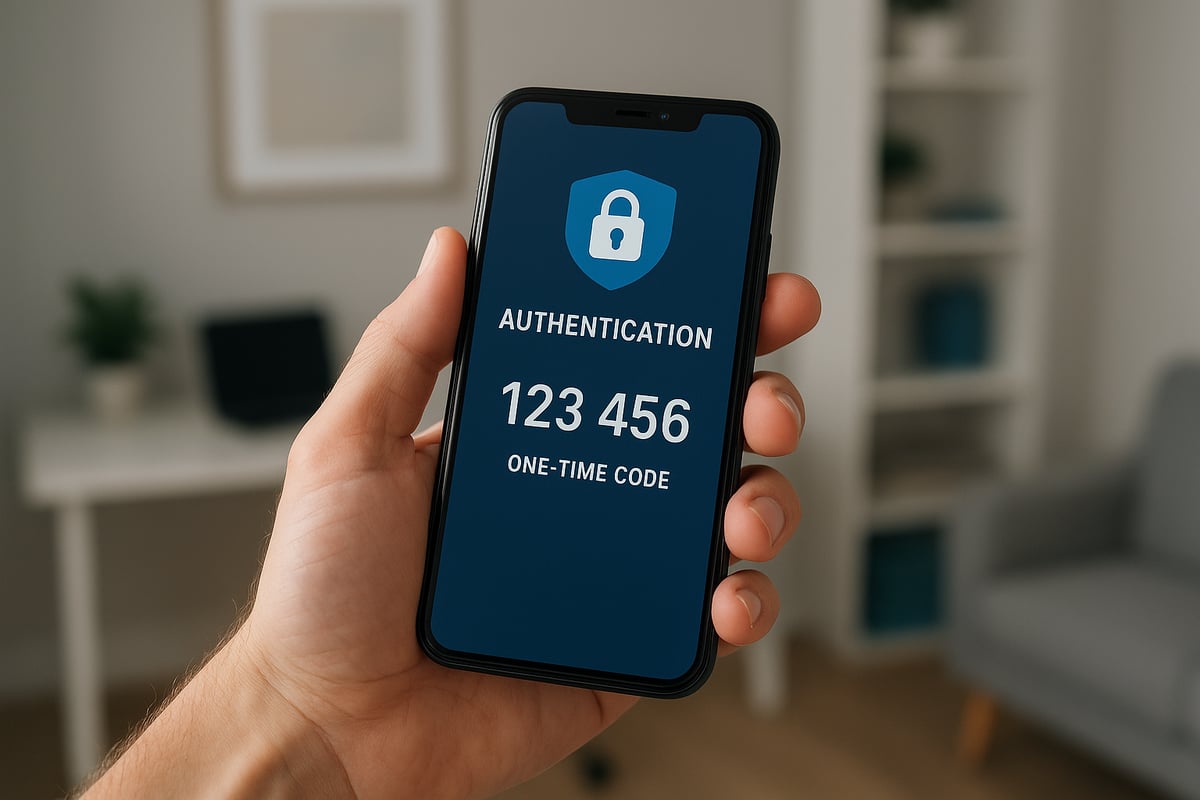
What Is MFA and Why It Matters
Multi-factor authentication (MFA) adds a critical extra layer to protecting your passwords. Instead of relying solely on something you know (your password), MFA combines it with something you have (like a phone or hardware key) or something you are (biometrics).
There are several types of MFA, such as SMS codes, authenticator apps, and hardware tokens. According to Microsoft Security Report findings, MFA can block over 99.9% of automated attacks. This means that even if a password is compromised, an attacker cannot access your account without the second factor, greatly enhancing protecting your passwords.
Choosing the Right MFA Methods
Choosing the best MFA method is essential for protecting your passwords against modern threats. Let's compare the main options:
|
MFA Method |
Pros |
Cons |
|---|---|---|
|
SMS Codes |
Easy to use |
Vulnerable to SIM swaps |
|
Authenticator App |
More secure, convenient |
Needs smartphone |
|
Hardware Key |
Highest security |
Cost, can be lost |
SMS-based MFA is better than nothing but can be undermined by SIM swapping. Authenticator apps and hardware keys are more secure. For a deeper look at trends and tips, see these password security key trends. Adopting the right method is a core step in protecting your passwords.
Setting Up MFA: Step-by-Step Guide
Setting up MFA is straightforward and a major step in protecting your passwords. Here is a simple guide:
- Log in to your account (Google, Apple, banking, etc.).
- Go to security settings and find MFA options.
- Choose your preferred method: SMS, authenticator app, or hardware key.
- Scan the QR code or enter the setup key for app-based MFA.
- Save backup codes in a secure location.
- Test the MFA to confirm it works.
Using a password manager with MFA enabled adds another layer, making your approach to protecting your passwords even more robust.
The Future: Passwordless Authentication
The future of protecting your passwords lies in moving beyond passwords altogether. Passwordless authentication uses standards like FIDO2 and WebAuthn, relying on biometrics or physical devices instead of traditional passwords.
With passwordless logins, you might use a fingerprint, face recognition, or a hardware security key. This approach reduces phishing risks and can be faster and more convenient. Adoption is growing rapidly, and by 2025, many organizations are expected to support passwordless options as part of protecting your passwords.
Overcoming MFA Challenges
While MFA is powerful for protecting your passwords, it comes with challenges. Some users, especially seniors or those less tech-savvy, may find setup confusing. Solutions include simplified onboarding, clear instructions, and support for trusted contacts.
Losing access to your second factor can be stressful. Always set up backup codes and recovery methods in advance. Many services now offer emergency access features, ensuring that protecting your passwords is not compromised if you lose a device.
Secure Storage and Management of Passwords
Managing and storing your credentials securely is the backbone of protecting your passwords in 2025. With cyber threats growing more advanced, relying on outdated methods like sticky notes or browser-saved passwords is no longer safe. Instead, adopting modern, encrypted tools and strategies is crucial to keep your digital life secure.
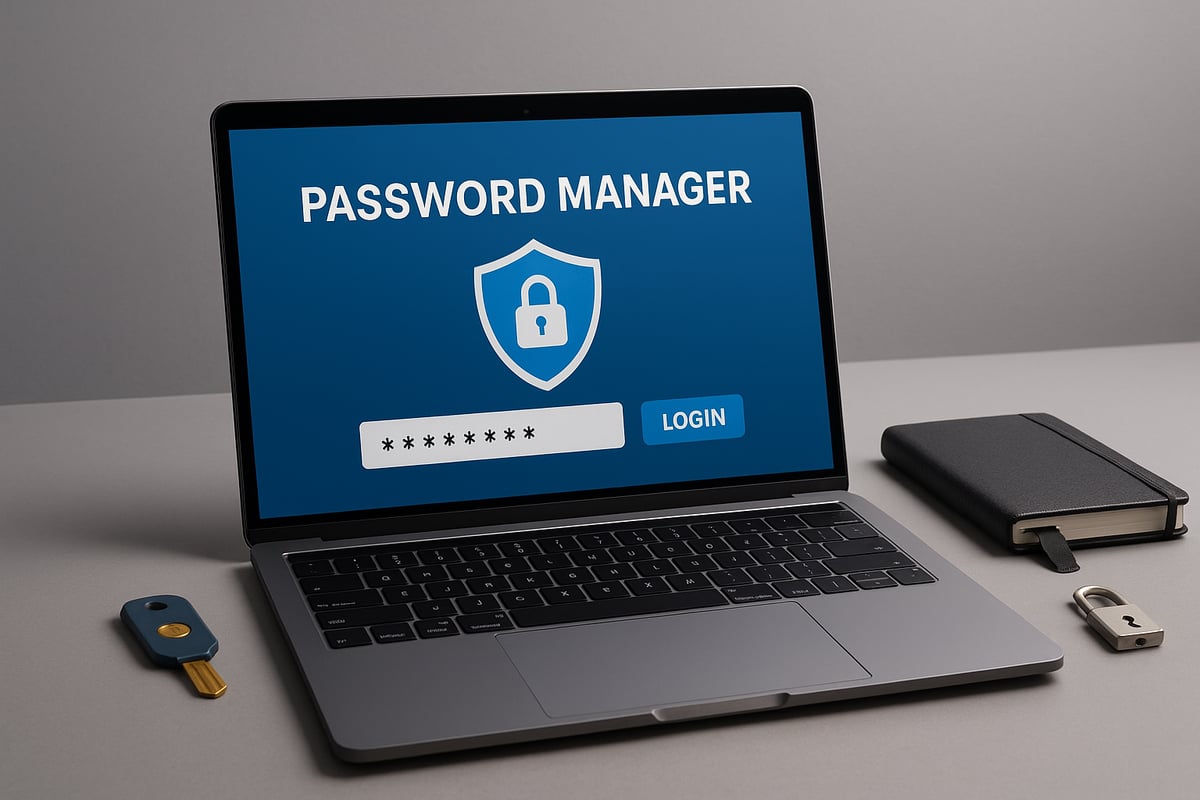
Storing Passwords Safely
Never write passwords on paper or store them in unprotected text files. Physical notes can be lost or stolen, and digital files without encryption are easy targets for malware and hackers. Instead, opt for encrypted digital storage solutions specifically designed for protecting your passwords.
Browser-saved passwords, while convenient, often lack strong encryption and are vulnerable if your device is compromised. Dedicated password managers offer much stronger security and should be your primary tool for storing credentials. This simple change greatly reduces your risk of exposure.
Choosing a Password Manager: Key Features
Selecting the right password manager is essential for protecting your passwords. Look for solutions offering zero-knowledge encryption, meaning only you can access your stored data. This feature ensures the provider cannot see or misuse your information. To understand this concept, see Zero-knowledge encryption explained.
Other critical features include cross-platform compatibility, regular security audits, and a transparent privacy policy. Evaluate whether an open-source or proprietary option best fits your needs, but always prioritize a strong security track record.
Protecting Your Password Manager
Your password manager is the central vault for all your credentials. Use a long, unique master password that you never reuse elsewhere. This is the first line of defense in protecting your passwords from unauthorized access.
Enable multi-factor authentication (MFA) on your password manager whenever possible. Regularly update the software to patch vulnerabilities and stay ahead of new threats. These steps ensure your digital vault remains secure even if attackers gain access to your device.
Managing Passwords for Multiple Accounts
Organization is key when protecting your passwords across personal, work, and family accounts. Most password managers allow you to create folders or tags for easy sorting and retrieval. This structure helps prevent confusion and accidental credential sharing.
If you need to share access, use secure sharing features built into your password manager, not text or email. Some managers offer family or team plans, making it easier to manage and protect group credentials without sacrificing security.
Recovery and Emergency Access
Planning for emergencies is a vital part of protecting your passwords. Set up account recovery options, such as backup codes or biometric access, in case you forget your master password or lose your device.
Many password managers allow you to designate trusted contacts who can help restore access in critical situations. Consider using inheritance features so family members can access important accounts if needed. This proactive approach ensures you are never locked out when it matters most.
The Human Factor: Education, Habits, and Social Engineering
No matter how advanced your security tools are, the weakest link is often human behavior. Protecting your passwords requires more than technical solutions. It demands vigilance, education, and the right habits, both at home and in the workplace.
Recognizing Social Engineering Attacks
Social engineering attacks trick people into revealing sensitive information. Phishing emails, fake login pages, and phone scams are common tactics used by cybercriminals. For example, spear-phishing campaigns have targeted executives by mimicking trusted contacts.
Attackers prey on urgency, fear, or curiosity to bypass technical defenses. They may create convincing messages that appear legitimate. According to Global password trends analysis, social engineering remains a leading cause of compromised accounts. Recognizing these schemes is essential for protecting your passwords and preventing unauthorized access.
Building Better Password Habits
Good password habits are fundamental to protecting your passwords in daily life. Regularly assess your password hygiene by checking for weak or reused credentials. Use reminders or apps that prompt you to update passwords and monitor for suspicious activity.
Consider these best practices:
- Use unique passwords for every account.
- Change passwords if you receive breach notifications.
- Never share passwords through email or text.
Empowering yourself with these habits reduces risk and strengthens your security posture. Tools like automated checkups can help reinforce the practice of protecting your passwords.
Family and Workplace Training
Educating your family and colleagues is vital for protecting your passwords across all environments. Children and employees are frequent targets for attackers, making ongoing training a necessity. Establish a culture of security by hosting regular awareness sessions and sharing real-life scenarios of breaches.
Practical steps include:
- Setting clear password guidelines for everyone.
- Utilizing password managers with shared access features.
- Reviewing Best practices for encrypted vaults to teach secure storage methods.
By fostering teamwork and mutual accountability, you make protecting your passwords a shared responsibility at home and work.
Staying Informed on Evolving Threats
The threat landscape is always changing, so staying informed is key to protecting your passwords. Subscribe to breach notification services and security news sites to receive timely alerts about new attacks or vulnerabilities.
Useful resources include:
- "Have I Been Pwned" for breach checks.
- Security blogs and newsletters.
- Industry reports on password trends.
Regular updates ensure you recognize new threats and adapt your defenses. Making information a priority is another layer in protecting your passwords from evolving risks.
Future Trends in Password Protection for 2025 and Beyond
The landscape of protecting your passwords is rapidly changing. As technology evolves, so do both the threats and the solutions. Understanding where password protection is headed in 2025 and beyond will help you stay a step ahead of cybercriminals.
AI and Machine Learning in Security
AI and machine learning are reshaping how organizations approach protecting your passwords. Attackers now use AI to automate password cracking and launch smarter phishing campaigns. However, defenders are also leveraging AI for adaptive authentication, real-time threat detection, and password strength analysis.
For example, AI-driven password strength meters can evaluate not just length but also predictability and uniqueness. According to the Password statistics industry report, machine learning models are increasingly used to spot unusual login behavior, blocking attacks before they succeed.
As both sides innovate, staying informed about these advancements is key to protecting your passwords in 2025.
The Rise of Biometrics and Behavioral Authentication
Biometric authentication methods are gaining traction for protecting your passwords and digital identities. Fingerprint, face, and voice recognition are now more accurate and accessible across devices. Behavioral biometrics, which analyze how you type or interact with your device, add another layer of security.
These methods can reduce reliance on traditional passwords, making unauthorized access much harder. Still, privacy concerns remain, especially regarding how biometric data is stored and used. User acceptance is growing as the technology matures, but balancing convenience and privacy is crucial when protecting your passwords.
Regulatory and Industry Changes Impacting Passwords
New regulations and industry standards are shaping how organizations handle protecting your passwords. Updates to data privacy laws like GDPR and CCPA are driving stricter requirements for password storage, encryption, and user rights.
Industry groups follow guidelines such as those from NIST, which now recommend longer, more complex passwords and discourage forced frequent changes. The table below summarizes major regulatory shifts:
|
Standard |
Key Change |
Impact on Passwords |
|---|---|---|
|
GDPR |
Right to be forgotten |
Stronger encryption required |
|
NIST |
Passphrase support |
Less frequent forced changes |
Staying compliant is essential for protecting your passwords and avoiding legal consequences.
Preparing for a Passwordless Future
The shift toward passwordless authentication is accelerating, fundamentally changing how you approach protecting your passwords. Technologies like FIDO2, WebAuthn, and built-in biometrics enable logins without entering a password at all. Instead, users authenticate with hardware keys, fingerprints, or facial recognition.
Hybrid models are also emerging, combining passwords with biometrics or one-time codes for extra security. As adoption rates climb, expect more services to offer passwordless options within the next five years. By preparing now, you can future-proof your approach to protecting your passwords and minimize potential risks.
After learning how vital strong password habits and secure storage are for protecting your digital life in 2025, you might be wondering how to put these strategies into action for your family. That’s where IronClad Family comes in. Their digital vault makes it simple to organize, safeguard, and share your most important documents, passwords, and emergency plans—all with the highest levels of privacy and security. If you’re ready to take the next step toward peace of mind and digital protection for yourself and your loved ones, you can Start 14-Day Free Trial and see how effortless security can be.

Sahar Lester
Sahar Lester is the Founder and CEO of IronClad Family, a company dedicated to helping families and businesses safeguard their most valuable assets through secure digital vaults. With a master’s degree in Security Technologies from the University of Minnesota and experience spanning cybersecurity, leadership, and international commerce, Sahar bridges the gap between innovation and protection. She also serves as an adjunct professor at Metropolitan State University, mentoring the next generation of cybersecurity professionals.

